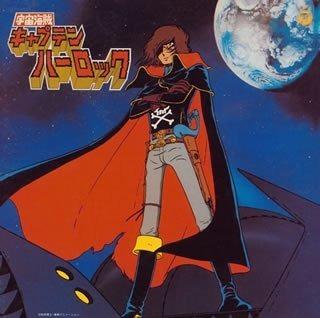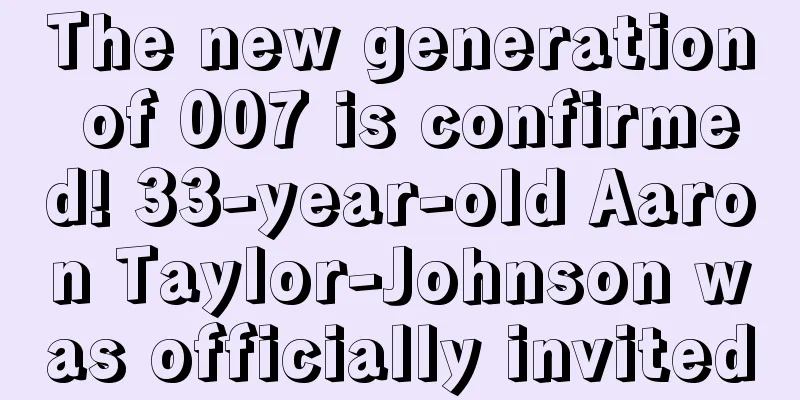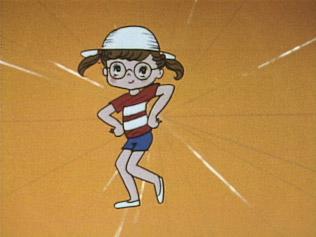The appeal and reputation of Space Pirate Captain Harlock: A deep analysis of the movie version

Space Pirate Captain Harlock - The appeal and reviews of the movieOverviewSpace Pirate Captain Harlock is an animated feature film released on July 15, 1978, based on the manga of the same name by Leiji Matsumoto. The film was produced by Toei Animation (now Toei Animation) and directed by Rintaro. Although it is a short film of 34 minutes in length, it depicts an epic space adventure and a deep human drama. storyThe pirate ship Arcadia, led by Captain Harlock, was drifting in space. One day, the sound of Mayumi playing an ocarina reached them from Earth. At that moment, the steering wheel of the Arcadia started moving, and it headed for Earth. With Mayumi aboard, the Arcadia headed for Earth's Sarzac Sea, where it was attacked by a squadron of jet planes commanded by Earth's Commander Kiruta. However, a group of warships suddenly emerged from the ocean floor and began firing on Kiruta's squadron. After Kiruta's squadron escaped, the Arcadia was also attacked, but it repelled the attack and continued to dive. Then, they discovered a huge dome-shaped object. Inside stood Aman, the witch who was the enemy of their comrade Tadashi's father. However, both Tadashi and Harlock were put to sleep by Aman. But then, the main gun of the Arcadia shot down Aman, the witch. After the Arcadia put the dome on and escaped, the sound of Mayumi playing the ocarina echoed throughout space. Main StaffMany talented staff members are involved in the production of this work. The project was planned by Ken Ariga, Takeshi Tamiya, and Yoichi Kominato, the original story was written by Reiji Matsumoto, the screenplay was written by Shozo Uehara, the direction was by Rintaro, the music was by Seiji Yokoyama, the theme song was by Masaaki Hirao, the anime character design was by Kazuo Komatsubara, and others include Takamura Mukuo. These staff members work together to depict a grand space adventure and a deep human drama. Evaluation and Appeal"Space Pirate Captain Harlock" depicts a grand space adventure and a deep human drama in its short running time. In particular, the character of Captain Harlock is depicted as someone who pursues freedom and justice, which has touched many viewers. Also, do not miss the beautiful visuals that combine Matsumoto Leiji's unique worldview with Rintaro's direction. Furthermore, Yokoyama Seiji's music and Hirao Masaaki's theme song liven up the entire work. This work has gained many fans since its release in 1978, and its appeal has not faded even today, and it is loved by many people. In particular, the character of Captain Harlock is depicted as someone who pursues freedom and justice, and has touched many viewers. Also, the visual beauty that combines Matsumoto Leiji's unique worldview with Rintaro's direction is not to be missed. Furthermore, Yokoyama Seiji's music and Hirao Masaaki's theme song liven up the entire work. Recommended points"Space Pirate Captain Harlock" is a work that depicts a grand space adventure and a deep human drama, and has touched many viewers. In particular, the character of Captain Harlock is depicted as pursuing freedom and justice, which has touched many viewers. In addition, the visual beauty that combines Leiji Matsumoto's unique worldview with Rintaro's direction is not to be missed. Furthermore, the music by Seiji Yokoyama and the theme song by Masaaki Hirao liven up the entire work. This work has gained many fans since its release in 1978, and its charm has not faded even today, and it is loved by many people. In particular, the character of Captain Harlock is depicted as pursuing freedom and justice, which has touched many viewers. In addition, the visual beauty that combines Leiji Matsumoto's unique worldview with Rintaro's direction is not to be missed. Furthermore, the music by Seiji Yokoyama and the theme song by Masaaki Hirao liven up the entire work. This work has gained many fans since its release in 1978, and its charm has not faded even today, and it is loved by many people. In particular, the character of Captain Harlock is depicted as pursuing freedom and justice, which has touched many viewers. In addition, the visual beauty that combines Leiji Matsumoto's unique worldview with Rintaro's direction is not to be missed. Furthermore, the music by Seiji Yokoyama and the theme song by Masaaki Hirao liven up the entire work. This work has gained many fans since its release in 1978, and its charm has not faded even today, and it is loved by many people. In particular, the character of Captain Harlock is depicted as pursuing freedom and justice, which has touched many viewers. In addition, the visual beauty that combines Leiji Matsumoto's unique worldview with Rintaro's direction is not to be missed. Furthermore, the music by Seiji Yokoyama and the theme song by Masaaki Hirao liven up the entire work. This work has gained many fans since its release in 1978, and its charm has not faded even today, and it is loved by many people. In particular, the character of Captain Harlock is depicted as pursuing freedom and justice, which has touched many viewers. In addition, the visual beauty that combines Leiji Matsumoto's unique worldview with Rintaro's direction is not to be missed. Furthermore, the music by Seiji Yokoyama and the theme song by Masaaki Hirao liven up the entire work. This work has gained many fans since its release in 1978, and its charm has not faded even today, and it is loved by many people. In particular, the character of Captain Harlock is depicted as pursuing freedom and justice, which has touched many viewers. In addition, the visual beauty that combines Leiji Matsumoto's unique worldview with Rintaro's direction is not to be missed. Furthermore, the music by Seiji Yokoyama and the theme song by Masaaki Hirao liven up the entire work. This work has gained many fans since its release in 1978, and its charm has not faded even today, and it is loved by many people. In particular, the character of Captain Harlock is depicted as pursuing freedom and justice, which has touched many viewers. In addition, the visual beauty that combines Leiji Matsumoto's unique worldview with Rintaro's direction is not to be missed. Furthermore, the music by Seiji Yokoyama and the theme song by Masaaki Hirao liven up the entire work. This work has gained many fans since its release in 1978, and its charm has not faded even today, and it is loved by many people. In particular, the character of Captain Harlock is depicted as pursuing freedom and justice, which has touched many viewers. In addition, the visual beauty that combines Leiji Matsumoto's unique worldview with Rintaro's direction is not to be missed. Furthermore, the music by Seiji Yokoyama and the theme song by Masaaki Hirao liven up the entire work. This work has gained many fans since its release in 1978, and its charm has not faded even today, and it is loved by many people. In particular, the character of Captain Harlock is depicted as pursuing freedom and justice, which has touched many viewers. In addition, the visual beauty that combines Leiji Matsumoto's unique worldview with Rintaro's direction is not to be missed. Furthermore, the music by Seiji Yokoyama and the theme song by Masaaki Hirao liven up the entire work. This work has gained many fans since its release in 1978, and its charm has not faded even today, and it is loved by many people. In particular, the character of Captain Harlock is depicted as pursuing freedom and justice, which has touched many viewers. In addition, the visual beauty that combines Leiji Matsumoto's unique worldview with Rintaro's direction is not to be missed. Furthermore, the music by Seiji Yokoyama and the theme song by Masaaki Hirao liven up the entire work. This work has gained many fans since its release in 1978, and its charm has not faded even today, and it is loved by many people. In particular, the character of Captain Harlock is depicted as pursuing freedom and justice, which has touched many viewers. In addition, the visual beauty that combines Leiji Matsumoto's unique worldview with Rintaro's direction is not to be missed. Furthermore, the music by Seiji Yokoyama and the theme song by Masaaki Hirao liven up the entire work. This work has gained many fans since its release in 1978, and its charm has not faded even today, and it is loved by many people. In particular, the character of Captain Harlock is depicted as pursuing freedom and justice, which has touched many viewers. In addition, the visual beauty that combines Leiji Matsumoto's unique worldview with Rintaro's direction is not to be missed. Furthermore, the music by Seiji Yokoyama and the theme song by Masaaki Hirao liven up the entire work. This work has gained many fans since its release in 1978, and its charm has not faded even today, and it is loved by many people. In particular, the character of Captain Harlock is depicted as pursuing freedom and justice, which has touched many viewers. In addition, the visual beauty that combines Leiji Matsumoto's unique worldview with Rintaro's direction is not to be missed. Furthermore, the music by Seiji Yokoyama and the theme song by Masaaki Hirao liven up the entire work. This work has gained many fans since its release in 1978, and its charm has not faded even today, and it is loved by many people. In particular, the character of Captain Harlock is depicted as pursuing freedom and justice, which has touched many viewers. In addition, the visual beauty that combines Leiji Matsumoto's unique worldview with Rintaro's direction is not to be missed. Furthermore, the music by Seiji Yokoyama and the theme song by Masaaki Hirao liven up the entire work. This work has gained many fans since its release in 1978, and its charm has not faded even today, and it is loved by many people. In particular, the character of Captain Harlock is depicted as pursuing freedom and justice, which has touched many viewers. In addition, the visual beauty that combines Leiji Matsumoto's unique worldview with Rintaro's direction is not to be missed. Furthermore, the music by Seiji Yokoyama and the theme song by Masaaki Hirao liven up the entire work. This work has gained many fans since its release in 1978, and its charm has not faded even today, and it is loved by many people. In particular, the character of Captain Harlock is depicted as pursuing freedom and justice, which has touched many viewers. In addition, the visual beauty that combines Leiji Matsumoto's unique worldview with Rintaro's direction is not to be missed. Furthermore, the music by Seiji Yokoyama and the theme song by Masaaki Hirao liven up the entire work. This work has gained many fans since its release in 1978, and its charm has not faded even today, and it is loved by many people. In particular, the character of Captain Harlock is depicted as pursuing freedom and justice, which has touched many viewers. In addition, the visual beauty that combines Leiji Matsumoto's unique worldview with Rintaro's direction is not to be missed. Furthermore, the music by Seiji Yokoyama and the theme song by Masaaki Hirao liven up the entire work. This work has gained many fans since its release in 1978, and its charm has not faded even today, and it is loved by many people. In particular, the character of Captain Harlock is depicted as pursuing freedom and justice, which has touched many viewers. In addition, the visual beauty that combines Leiji Matsumoto's unique worldview with Rintaro's direction is not to be missed. Furthermore, the music by Seiji Yokoyama and the theme song by Masaaki Hirao liven up the entire work. This work has gained many fans since its release in 1978, and its charm has not faded even today, and it is loved by many people. In particular, the character of Captain Harlock is depicted as pursuing freedom and justice, which has touched many viewers. In addition, the visual beauty that combines Leiji Matsumoto's unique worldview with Rintaro's direction is not to be missed. Furthermore, the music by Seiji Yokoyama and the theme song by Masaaki Hirao liven up the entire work. This work has gained many fans since its release in 1978, and its charm has not faded even today, and it is loved by many people. In particular, the character of Captain Harlock is depicted as pursuing freedom and justice, which has touched many viewers. In addition, the visual beauty that combines Leiji Matsumoto's unique worldview with Rintaro's direction is not to be missed. Furthermore, the music by Seiji Yokoyama and the theme song by Masaaki Hirao liven up the entire work. This work has gained many fans since its release in 1978, and its charm has not faded even today, and it is loved by many people. In particular, the character of Captain Harlock is depicted as pursuing freedom and justice, which has touched many viewers. In addition, the visual beauty that combines Leiji Matsumoto's unique worldview with Rintaro's direction is not to be missed. Furthermore, the music by Seiji Yokoyama and the theme song by Masaaki Hirao liven up the entire work. This work has gained many fans since its release in 1978, and its charm has not faded even today, and it is loved by many people. In particular, the character of Captain Harlock is depicted as pursuing freedom and justice, which has touched many viewers. In addition, the visual beauty that combines Leiji Matsumoto's unique worldview with Rintaro's direction is not to be missed. Furthermore, the music by Seiji Yokoyama and the theme song by Masaaki Hirao liven up the entire work. This work has gained many fans since its release in 1978, and its charm has not faded even today, and it is loved by many people. In particular, the character of Captain Harlock is depicted as pursuing freedom and justice, which has touched many viewers. In addition, the visual beauty that combines Leiji Matsumoto's unique worldview with Rintaro's direction is not to be missed. Furthermore, the music by Seiji Yokoyama and the theme song by Masaaki Hirao liven up the entire work. This work has gained many fans since its release in 1978, and its charm has not faded even today, and it is loved by many people. In particular, the character of Captain Harlock is depicted as pursuing freedom and justice, which has touched many viewers. In addition, the visual beauty that combines Leiji Matsumoto's unique worldview with Rintaro's direction is not to be missed. Furthermore, the music by Seiji Yokoyama and the theme song by Masaaki Hirao liven up the entire work. This work has gained many fans since its release in 1978, and its charm has not faded even today, and it is loved by many people. In particular, the character of Captain Harlock is depicted as pursuing freedom and justice, which has touched many viewers. In addition, the visual beauty that combines Leiji Matsumoto's unique worldview with Rintaro's direction is not to be missed. Furthermore, the music by Seiji Yokoyama and the theme song by Masaaki Hirao liven up the entire work. This work has gained many fans since its release in 1978, and its charm has not faded even today, and it is loved by many people. In particular, the character of Captain Harlock is depicted as pursuing freedom and justice, which has touched many viewers. In addition, the visual beauty that combines Leiji Matsumoto's unique worldview with Rintaro's direction is not to be missed. Furthermore, the music by Seiji Yokoyama and the theme song by Masaaki Hirao liven up the entire work. This work has gained many fans since its release in 1978, and its charm has not faded even today, and it is loved by many people. In particular, the character of Captain Harlock is depicted as pursuing freedom and justice, which has touched many viewers. In addition, the visual beauty that combines Leiji Matsumoto's unique worldview with Rintaro's direction is not to be missed. Furthermore, the music by Seiji Yokoyama and the theme song by Masaaki Hirao liven up the entire work. This work has gained many fans since its release in 1978, and its charm has not faded even today, and it is loved by many people. In particular, the character of Captain Harlock is depicted as pursuing freedom and justice, which has touched many viewers. In addition, the visual beauty that combines Leiji Matsumoto's unique worldview with Rintaro's direction is not to be missed. Furthermore, the music by Seiji Yokoyama and the theme song by Masaaki Hirao liven up the entire work. This work has gained many fans since its release in 1978, and its charm has not faded even today, and it is loved by many people. In particular, the character of Captain Harlock is depicted as pursuing freedom and justice, which has touched many viewers. In addition, the visual beauty that combines Leiji Matsumoto's unique worldview with Rintaro's direction is not to be missed. Furthermore, the music by Seiji Yokoyama and the theme song by Masaaki Hirao liven up the entire work. This work has gained many fans since its release in 1978, and its charm has not faded even today, and it is loved by many people. In particular, the character of Captain Harlock is depicted as pursuing freedom and justice, which has touched many viewers. In addition, the visual beauty that combines Leiji Matsumoto's unique worldview with Rintaro's direction is not to be missed. Furthermore, the music by Seiji Yokoyama and the theme song by Masaaki Hirao liven up the entire work. This work has gained many fans since its release in 1978, and its charm has not faded even today, and it is loved by many people. In particular, the character of Captain Harlock is depicted as pursuing freedom and justice, which has touched many viewers. In addition, the visual beauty that combines Leiji Matsumoto's unique worldview with Rintaro's direction is not to be missed. Furthermore, the music by Seiji Yokoyama and the theme song by Masaaki Hirao liven up the entire work. This work has gained many fans since its release in 1978, and its charm has not faded even today, and it is loved by many people. In particular, the character of Captain Harlock is depicted as pursuing freedom and justice, which has touched many viewers. In addition, the visual beauty that combines Leiji Matsumoto's unique worldview with Rintaro's direction is not to be missed. Furthermore, the music by Seiji Yokoyama and the theme song by Masaaki Hirao liven up the entire work. This work has gained many fans since its release in 1978, and its charm has not faded even today, and it is loved by many people. In particular, the character of Captain Harlock is depicted as pursuing freedom and justice, which has touched many viewers. In addition, the visual beauty that combines Leiji Matsumoto's unique worldview with Rintaro's direction is not to be missed. Furthermore, the music by Seiji Yokoyama and the theme song by Masaaki Hirao liven up the entire work. This work has gained many fans since its release in 1978, and its charm has not faded even today, and it is loved by many people. In particular, the character of Captain Harlock is depicted as pursuing freedom and justice, which has touched many viewers. In addition, the visual beauty that combines Leiji Matsumoto's unique worldview with Rintaro's direction is not to be missed. Furthermore, the music by Seiji Yokoyama and the theme song by Masaaki Hirao liven up the entire work. This work has gained many fans since its release in 1978, and its charm has not faded even today, and it is loved by many people. In particular, the character of Captain Harlock is depicted as pursuing freedom and justice, which has touched many viewers. In addition, the visual beauty that combines Leiji Matsumoto's unique worldview with Rintaro's direction is not to be missed. Furthermore, the music by Seiji Yokoyama and the theme song by Masaaki Hirao liven up the entire work. This work has gained many fans since its release in 1978, and its charm has not faded even today, and it is loved by many people. In particular, the character of Captain Harlock is depicted as pursuing freedom and justice, which has touched many viewers. In addition, the visual beauty that combines Leiji Matsumoto's unique worldview with Rintaro's direction is not to be missed. Furthermore, the music by Seiji Yokoyama and the theme song by Masaaki Hirao liven up the entire work. This work has gained many fans since its release in 1978, and its charm has not faded even today, and it is loved by many people. In particular, the character of Captain Harlock is depicted as pursuing freedom and justice, which has touched many viewers. In addition, the visual beauty that combines Leiji Matsumoto's unique worldview with Rintaro's direction is not to be missed. Furthermore, the music by Seiji Yokoyama and the theme song by Masaaki Hirao liven up the entire work. This work has gained many fans since its release in 1978, and its charm has not faded even today, and it is loved by many people. In particular, the character of Captain Harlock is depicted as pursuing freedom and justice, which has touched many viewers. In addition, the visual beauty that combines Leiji Matsumoto's unique worldview with Rintaro's direction is not to be missed. Furthermore, the music by Seiji Yokoyama and the theme song by Masaaki Hirao liven up the entire work. This work has gained many fans since its release in 1978, and its charm has not faded even today, and it is loved by many people. In particular, the character of Captain Harlock is depicted as pursuing freedom and justice, which has touched many viewers. In addition, the visual beauty that combines Leiji Matsumoto's unique worldview with Rintaro's direction is not to be missed. Furthermore, the music by Seiji Yokoyama and the theme song by Masaaki Hirao liven up the entire work. This work has gained many fans since its release in 1978, and its charm has not faded even today, and it is loved by many people. In particular, the character of Captain Harlock is depicted as pursuing freedom and justice, which has touched many viewers. In addition, the visual beauty that combines Leiji Matsumoto's unique worldview with Rintaro's direction is not to be missed. Furthermore, the music by Seiji Yokoyama and the theme song by Masaaki Hirao liven up the entire work. This work has gained many fans since its release in 1978, and its charm has not faded even today, and it is loved by many people. In particular, the character of Captain Harlock is depicted as pursuing freedom and justice, which has touched many viewers. In addition, the visual beauty that combines Leiji Matsumoto's unique worldview with Rintaro's direction is not to be missed. Furthermore, the music by Seiji Yokoyama and the theme song by Masaaki Hirao liven up the entire work. This work has gained many fans since its release in 1978, and its charm has not faded even today, and it is loved by many people. In particular, the character of Captain Harlock is depicted as pursuing freedom and justice, which has touched many viewers. In addition, the visual beauty that combines Leiji Matsumoto's unique worldview with Rintaro's direction is not to be missed. Furthermore, the music by Seiji Yokoyama and the theme song by Masaaki Hirao liven up the entire work. This work has gained many fans since its release in 1978, and its charm has not faded even today, and it is loved by many people. In particular, the character of Captain Harlock is depicted as pursuing freedom and justice, which has touched many viewers. In addition, the visual beauty that combines Leiji Matsumoto's unique worldview with Rintaro's direction is not to be missed. Furthermore, the music by Seiji Yokoyama and the theme song by Masaaki Hirao liven up the entire work. This work has gained many fans since its release in 1978, and its charm has not faded even today, and it is loved by many people. In particular, the character of Captain Harlock is depicted as pursuing freedom and justice, which has touched many viewers. In addition, the visual beauty that combines Leiji Matsumoto's unique worldview with Rintaro's direction is not to be missed. Furthermore, the music by Seiji Yokoyama and the theme song by Masaaki Hirao liven up the entire work. This work has gained many fans since its release in 1978, and its charm has not faded even today, and it is loved by many people. In particular, the character of Captain Harlock is depicted as pursuing freedom and justice, which has touched many viewers. In addition, the visual beauty that combines Leiji Matsumoto's unique worldview with Rintaro's direction is not to be missed. Furthermore, the music by Seiji Yokoyama and the theme song by Masaaki Hirao liven up the entire work. This work has gained many fans since its release in 1978, and its charm has not faded even today, and it is loved by many people. In particular, the character of Captain Harlock is depicted as pursuing freedom and justice, which has touched many viewers. In addition, the visual beauty that combines Leiji Matsumoto's unique worldview with Rintaro's direction is not to be missed. Furthermore, the music by Seiji Yokoyama and the theme song by Masaaki Hirao liven up the entire work.になったんです。 English: The first thing you can do is to find the best one to do.になったんです。 English: The first thing you can do is to find the best one to do.になったんです。 English: The first thing you can do is to find the best one to do.になったんです。 English: The first thing you can do is to find the best one to do.になったんです。 English: The first thing you can do is to find the best one to do.になったんです。 English: The first thing you can do is to find the best one to do.になったんです。 English: The first thing you can do is to find the best one to do.になったんです。 English: The first thing you can do is to find the best one to do.になったんです。 English: The first thing you can do is to find the best one to do.になったんです。 English: The first thing you can do is to find the best one to do.になったんです。 English: The first thing you can do is to find the best one to do.になったんです。 English: The first thing you can do is to find the best one to do.になったんです。 English: The first thing you can do is to find the best one to do.になったんです。 English: The first thing you can do is to find the best one to do.になったんです。 English: The first thing you can do is to find the best one to do.になったんです。 English: The first thing you can do is to find the best one to do.になったんです。 English: The first thing you can do is to find the best one to do.になったんです。 English: The first thing you can do is to find the best one to do.になったんです。 English: The first thing you can do is to find the best one to do.になったんです。 English: The first thing you can do is to find the best one to do.になったんです。 English: The first thing you can do is to find the best one to do.になったんです。 English: The first thing you can do is to find the best one to do.になったんです。 English: The first thing you can do is to find the best one to do.になったんです。 English: The first thing you can do is to find the best one to do.になったんです。 English: The first thing you can do is to find the best one to do.になったんです。 English: The first thing you can do is to find the best one to do.この作品は、1978年の公開当時から多くのファンを獲得し、現在でもその魅力は色褪せることなく、多くの人々に愛されています。特に、キャプテン・ハーロックのキャラクターは、自由と正義を追求する姿勢が描かれており、多くの視聴者に感動を与えています。また、松本零士の独特な世界観とりんたろうの演出が融合した映像美も見逃せません。さらに、横山菁児の音楽と平尾昌晃の主題曲が作品全体を盛り上げています。この作品は、1978年の公開当時から多くのファンを獲得し、現在でもその魅力は色褪せることなく、多くの人々に愛されています。特に、キャプテン・ハーロックのキャラクターは、自由と正義を追求する姿勢が描かれており、多くの視聴者に感動を与えています。また、松本零士の独特な世界観とりんたろうの演出が融合した映像美も見逃せません。さらに、横山菁児の音楽と平尾昌晃の主題曲が作品全体を盛り上げています。この作品は、1978年の公開当時から多くのファンを獲得し、現在でもその魅力は色褪せることなく、多くの人々に愛されています。特に、キャプテン・ハーロックのキャラクターは、自由と正義を追求する姿勢が描かれており、多くの視聴者に感動を与えています。また、松本零士の独特な世界観とりんたろうの演出が融合した映像美も見逃せません。さらに、横山菁児の音楽と平尾昌晃の主題曲が作品全体を盛り上げています。この作品は、1978年の公開当時から多くのファンを獲得し、現在でもその魅力は色褪せることなく、多くの人々に愛されています。特に、キャプテン・ハーロックのキャラクターは、自由と正義を追求する姿勢が描かれており、多くの視聴者に感動を与えています。また、松本零士の独特な世界観とりんたろうの演出が融合した映像美も見逃せません。さらに、横山菁児の音楽と平尾昌晃の主題曲が作品全体を盛り上げています。この作品は、1978年の公開当時から多くのファンを獲得し、現在でもその魅力は色褪せることなく、多くの人々に愛されています。特に、キャプテン・ハーロックのキャラクターは、自由と正義を追求する姿勢が描かれており、多くの視聴者に感動を与えています。また、松本零士の独特な世界観とりんたろうの演出が融合した映像美も見逃せません。さらに、横山菁児の音楽と平尾昌晃の主題曲が作品全体を盛り上げています。この作品は、1978年の公開当時から多くのファンを獲得し、現在でもその魅力は色褪せることなく、多くの人々に愛されています。特に、キャプテン・ハーロックのキャラクターは、自由と正義を追求する姿勢が描かれており、多くの視聴者に感動を与えています。また、松本零士の独特な世界観とりんたろうの演出が融合した映像美も見逃せません。さらに、横山菁児の音楽と平尾昌晃の主題曲が作品全体を盛り上げています。この作品は、1978年の公開当時から多くのファンを獲得し、現在でもその魅力は色褪せることなく、多くの人々に愛されています。特に、キャプテン・ハーロックのキャラクターは、自由と正義を追求する姿勢が描かれており、多くの視聴者に感動を与えています。また、松本零士の独特な世界観とりんたろうの演出が融合した映像美も見逃せません。さらに、横山菁児の音楽と平尾昌晃の主題曲が作品全体を盛り上げています。この作品は、1978年の公開当時から多くのファンを獲得し、現在でもその魅力は色褪せることなく、多くの人々に愛されています。特に、キャプテン・ハーロックのキャラクターは、自由と正義を追求する姿勢が描かれており、多くの視聴者に感動を与えています。また、松本零士の独特な世界観とりんたろうの演出が融合した映像美も見逃せません。さらに、横山菁児の音楽と平尾昌晃の主題曲が作品全体を盛り上げています。この作品は、1978年の公開当時から多くのファンを獲得し、現在でもその魅力は色褪せることなく、多くの人々に愛されています。特に、キャプテン・ハーロックのキャラクターは、自由と正義を追求する姿勢が描かれており、多くの視聴者に感動を与えています。また、松本零士の独特な世界観とりんたろうの演出が融合した映像美も見逃せません。さらに、横山菁児の音楽と平尾昌晃の主題曲が作品全体を盛り上げています。この作品は、1978年の公開当時から多くのファンを獲得し、現在でもその魅力は色褪せることなく、多くの人々に愛されています。特に、キャプテン・ハーロックのキャラクターは、自由と正義を追求する姿勢が描かれており、多くの視聴者に感動を与えています。また、松本零士の独特な世界観とりんたろうの演出が融合した映像美も見逃せません。さらに、横山菁児の音楽と平尾昌晃の主題曲が作品全体を盛り上げています。この作品は、1978年の公開当時から多くのファンを獲得し、現在でもその魅力は色褪せることなく、多くの人々に愛されています。特に、キャプテン・ハーロックのキャラクターは、自由と正義を追求する姿勢が描かれており、多くの視聴者に感動を与えています。また、松本零士の独特な世界観とりんたろうの演出が融合した映像美も見逃せません。さらに、横山菁児の音楽と平尾昌晃の主題曲が作品全体を盛り上げています。この作品は、1978年の公開当時から多くのファンを獲得し、現在でもその魅力は色褪せることなく、多くの人々に愛されています。特に、キャプテン・ハーロックのキャラクターは、 |
<<: The appeal and reputation of The Genie Family: Rediscovering the good old anime
>>: Science Ninja Team Gatchaman: The appeal and reputation of the classic anime
Recommend
Is there still a chance for Kill Bill 3? Quentin Tarantino says he has discussed it recently
Quentin recently appeared on the foreign podcast ...
Thor 4 will start filming in Australia in August 2020. Thor is very happy
Not long ago, Marvel officially confirmed the fil...
The 50th anniversary planning of "Space Battleship Yamato" has started, and Hideaki Anno is leading the planning
The classic space science fiction animation "...
The new trailer for Godzilla vs. Hedorah will be released online on November 10
How many of you have watched the classic special ...
The appeal and reviews of "07-GHOST": A thorough analysis of the profound story and the appeal of its characters
07-GHOST - Seven Ghosts - A Tale of the Deep and ...
Outlander's Sam Heughan reveals details of failed James Bond audition
Outlander co-star Sam Heughan has spoken about hi...
Due to the strike, Dune 2 and Aquaman 2 may be postponed to 2024
Today (July 21), Variety cited sources as reporti...
"Celebrating More Than Years 2" hits a record high in popularity, two episodes will be added tonight
Tencent Video announced that the popularity of &q...
New trailer for the classic "The Quintessential Quintuplets" movie to be released on May 20
The new theatrical version of the popular romanti...
Vin Diesel to star in Bloodshot sequel
Adapted from the best-selling "Warrior Comic...
The appeal and reviews of Galaxy Express 999: Rainbow Signpost: Reevaluating the moving journey
The appeal and reviews of "Galaxy Express 99...
Cinemas across the country suspend operations, estimated annual box office losses will exceed 30 billion
Recently, the National Film Administration held a...
The new chapter of "The World's Wonderful Stories" in summer 20, "The Publisher", is still bizarre
The classic Japanese brain-opening drama "Th...
'Chibi Maruko-chan' author dies of breast cancer at 53
Momoko Sakura, the original author of the famous ...
HBO gives Westworld stars a $250,000 pay raise per episode
HBO renegotiated the salaries of the main charact...









